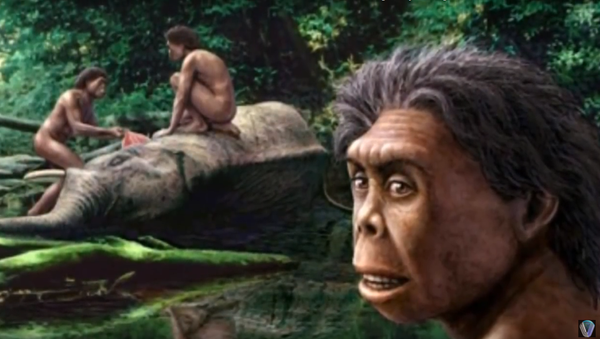The dwarf people, named Homo floresiensis, after the island of Flores in Indonesia where they were discovered, were about one meter tall and weighed some 25 kilos. The unique hominids are believed to have walked the island over 15,000 years ago.
Homo floresiensis (nicknamed ‘Hobbit’) 95,000-17,000 years ago — Island of Flores, Indonesia https://t.co/Ra2rMr8GgQ pic.twitter.com/noYrZbq4uP
— PaleoAnthropology+ (@Qafzeh) 4 февраля 2016
Since the first detection of the so-called hobbits in 2003, scientists from around the world have put forward contradicting theories of the genesis of the miniature people.
Misteri Evolusi Manusia Hobbit di Indonesia: Penemuan fosil manusia Hobbit berusia 18.000 tahun di Pulau Flores. https://t.co/xD35DShEWb
— •Riz• (@rizky_mcfc) 19 января 2016
Under this theory, some Homo erectus could have been cut off by rising sea levels from the mainland, during migrations over land bridges.
Another hypothesis suggests that the Flores people were actually ancestors of contemporary humans but suffered an unspecified disease. This explains why the “hobbit’s” brain was the size of a grapefruit, according to postulate.
The latest study published in the Journal of Human Evolution has stunned the scientific world; it says the hobbits are a species altogether different from Homo sapiens.
To come to this conclusion a group of researchers examined the skulls of the ancient creatures using high-resolution images generated in Japan.
“There were no characteristics from our species,” Antoine Balzeau, a scientist at France’s Natural History Museum, said to AFP, after analyzing information contained in skull bone layers.
The researchers still maintain the possibility that the hobbit could be a reduced-size type of Homo erectus, which showed up on the neighboring island of Java several million years ago. It is not known whether Homo floresiensis belonged to a species of its own.



